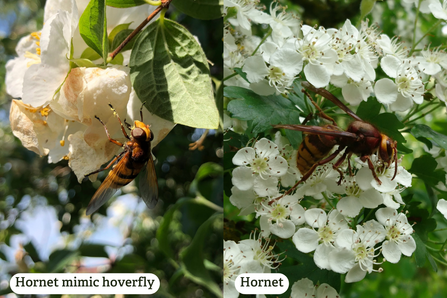The hornet hoverfly, the UK’s largest hoverfly at 2cm, is so good at imitating our native hornet that it can trick both people and hornets into believing that it is one. Both species have a deep buzz in flight, a yellow head, a dark orange-red thorax (the area just behind their head) and stripes across their abdomen.
Key features differentiate the two species, however. Hornet hoverflies have a broad body and large, round eyes, whilst hornets have a narrower middle and smaller eyes. In addition, hornets have two pairs of wings whereas hoverflies, like all flies, have one pair.

